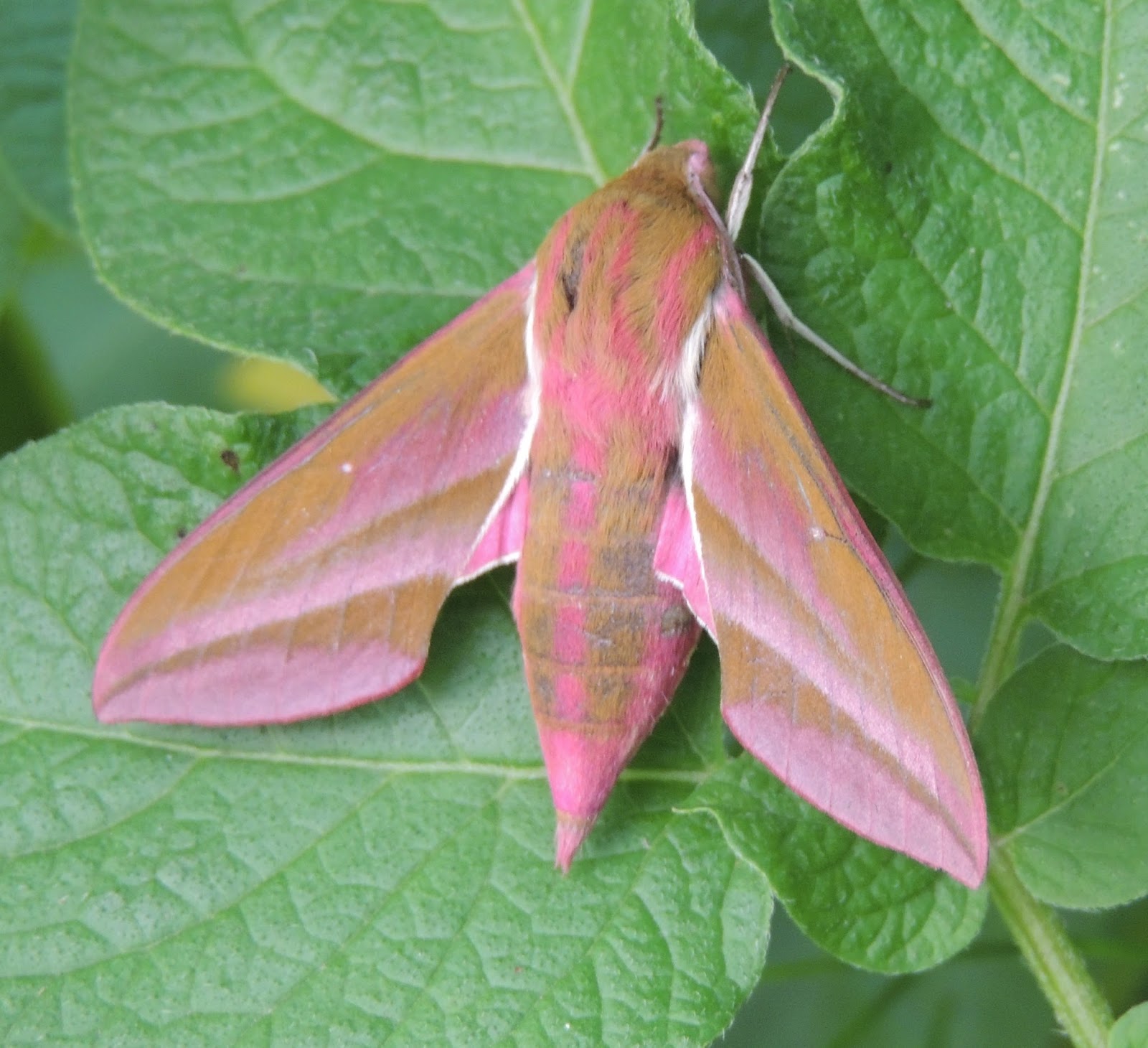Hello everyone! Today has been a really great day, the first day of my summer holidays! I had a lovely lie-in, listening to birdsong but the noise in the kitchen soon woke me up! My dad in cupped hands, offered up to us, a beautiful elephant hawk moth.He had spotted it on a nearby wall the night before and gently took it to our house, safely encapsulated it in an aerated jar with food and cover. We were delighted. My sister Bláthnaid was ecstatic as they are her absolute favourite moth. The kitchen was in such high spirits that no-one took any photos (apart from those my dad took the previous night) until it was safely housed on a leaf and quietly left alone. No matter, it didn’t stop me feeling jubilant. I love fact-finding, so I’ll share some with you for this blog post.
As you can see this Elephant Hawk Moth (Deilephila elpenor) is absolutely stunning, its vibrant pink and olive colouring make it really stand out in the moth world. It’s thorax feels like silk and the wings are so smooth and delicate, just gorgeous! The elephant hawk moth is pretty large but its name doesn’t refer to its size but the larva or caterpillars’ anterior, which resembles an elephant’s trunk. They use this ‘head’ for protection – when it retracts, it gives the impression a much larger and boisterous predator which startles the meal grabber, nice strategy! You find that a lot in nature, creatures evolve to survive, and adapt to do so. Here is a photo of one I found on the UK moths website.

The caterpillar feasts on bedstraw, willowherb and fuchsia; interestingly the colours of the hawk moth mirror those of the latter two. It’s probably not related but an interesting observation. These moths love to fly at dusk and can be seen fluttering from May-July. They live for a mere five weeks, that might seem fleeting but the silkworm moth only lasts one week! It is pretty common, found in most habitats and has a wingspan of about 70mm. The female lay its eggs singly on the plants the caterpillar likes to eat (elegant!) so when they emerge 7-10 days later they can munch away (no hungry caterpillar feasting ;). The caterpillars moult from green to brown and are fully grown in about 30 days, they grow pretty big at around 85mm in length. If you have fuchsia in your garden, check it out in August/September time, the caterpillars are really cool! Some gardeners dislike them for their love of the beautiful bell-like buds. So, when the caterpillars have had their fill, they hang out in the sun and bask for a bit before burrowing a litttle into the soil or leaves, where they overwinter.
When they emerge in May in their beautful form, they fly to the light at dusk and feed on the nectar of honeysuckle. If you see one, just sit back and watch this beautiful insect, defintely the most glamorous and colourful species of the UK moth world.
Hope you enjoyed reading a little about the Elephant Hawk Moth.
Dara


5 Responses
Wow, fantastic pictures, we’ve had hummingbird hawk moths in our garden, but only briefly and never for long enough to see them in such detail. Really enjoyed reading your blog.
Lovely! They are stunning too 🙂 Thank you!
Wow. They are really beautiful. I don’t think we have those here.
I’m not sure, I’ll get Dara to check 🙂 (Róisín )
Such an informative blog Dara 🙂